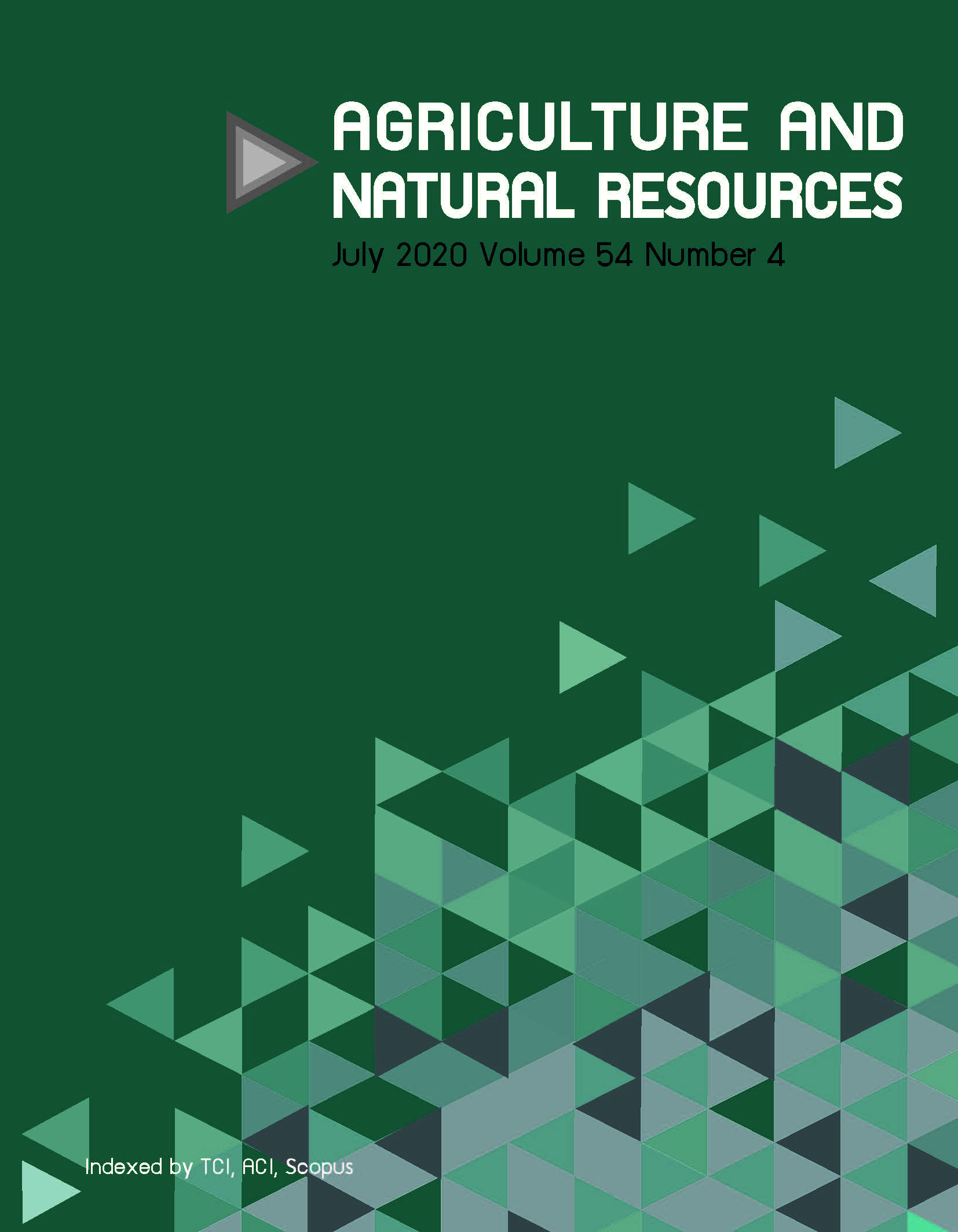Food safety risk assessment of pesticide residues in Chinese kale grown in Khon Kaen province, northeast Thailand
Keywords:
Consumer risk, Good Agricultural Practice (GAP), Hazard index, Pesticide risk, Risk assessmentAbstract
Pesticide residues in Chinese kale were monitored and assessed to investigate their risk to food safety. In total, 60 samples of Chinese kale under Good Agricultural Practice (GAP) and non-GAP production were analyzed for the presence of 146 pesticides using the quick, easy, cheap, effective, rugged and safe multi-residue extraction method, followed by liquid chromatography-tandem mass spectrometry. A Chinese kale sample in each plot was taken during harvesting in the winter, summer and rainy seasons of 2018. From the 60 Chinese kale samples, no pesticide residues were detected in 10 samples (16.7%) while 50 samples (83.3%) had detectable pesticide residues, with relatively higher proportions in non-GAP samples that exceeded the maximum residue limits levels established by the Thai Agricultural Standard and Codex Alimentarius Commission, especially in the rainy season. Assessment of consumption risk in terms of a hazard index (%HI) showed that the average %HI of Chinese kale from the GAP samples was in the range 0.04–0.57%, while for Chinese kale from non-GAP samples the range was 0.62–2.66%. As the HI values were less than 100, the sampled Chinese kale could be considered acceptable regarding food safety. However, detected pesticide levels in the Chinese kale from non-GAP plots were higher than from GAP plots, indicating that consumers are less exposed to pesticide toxicity from consuming Chinese kale from GAP farms than from non-GAP farms.
Downloads
Published
How to Cite
Issue
Section
License

This work is licensed under a Creative Commons Attribution-NonCommercial-NoDerivatives 4.0 International License.
online 2452-316X print 2468-1458/Copyright © 2022. This is an open access article under the CC BY-NC-ND license (http://creativecommons.org/licenses/by-nc-nd/4.0/),
production and hosting by Kasetsart University of Research and Development Institute on behalf of Kasetsart University.







